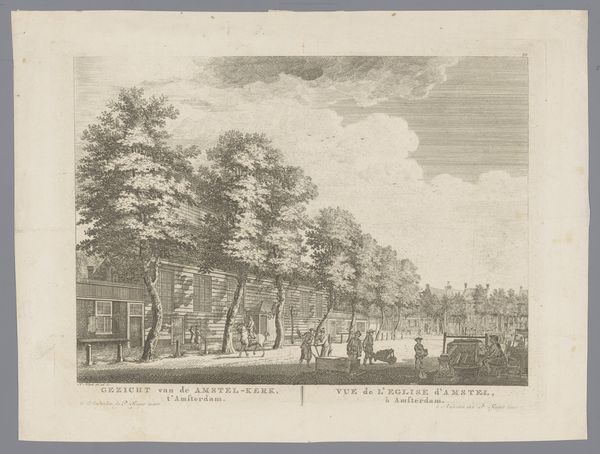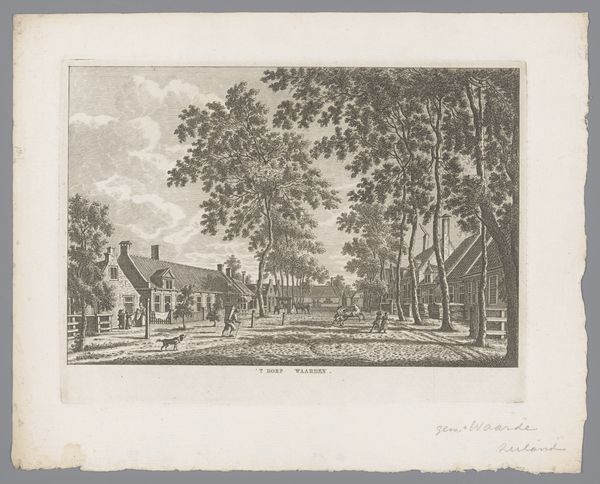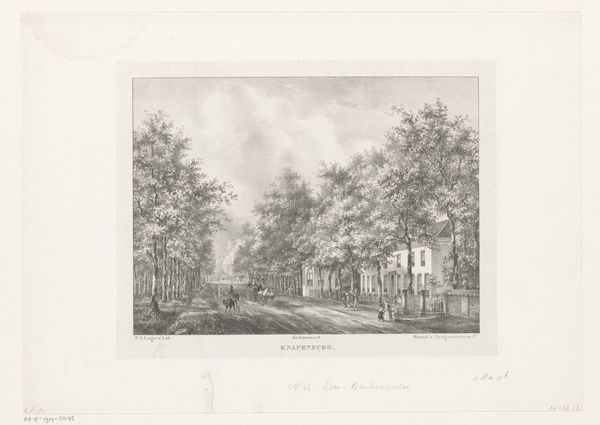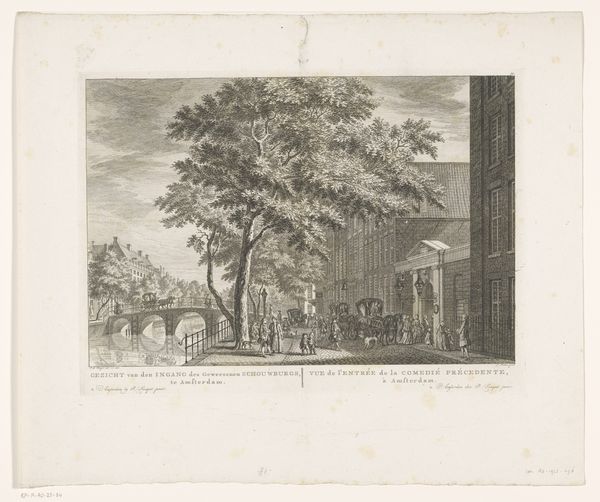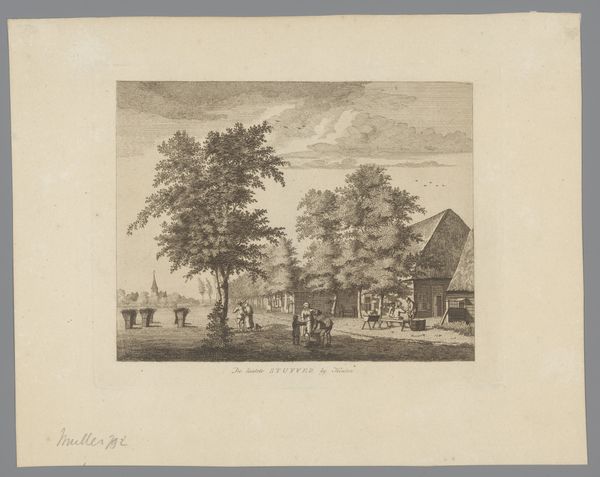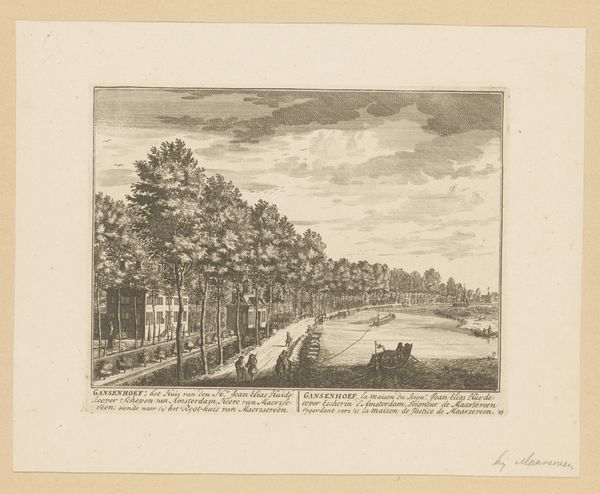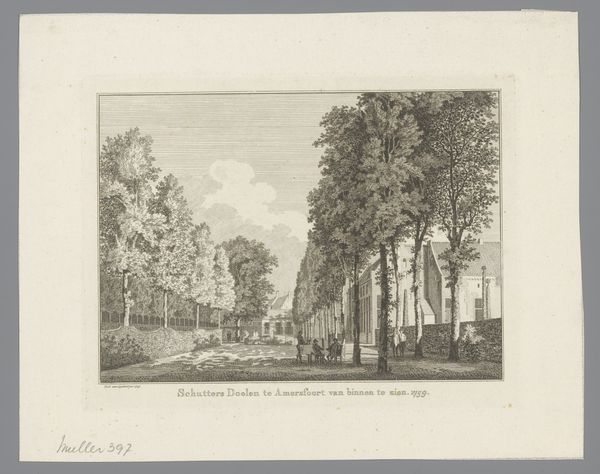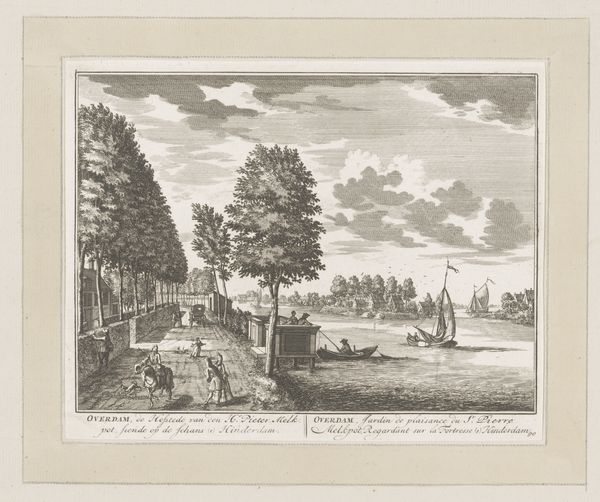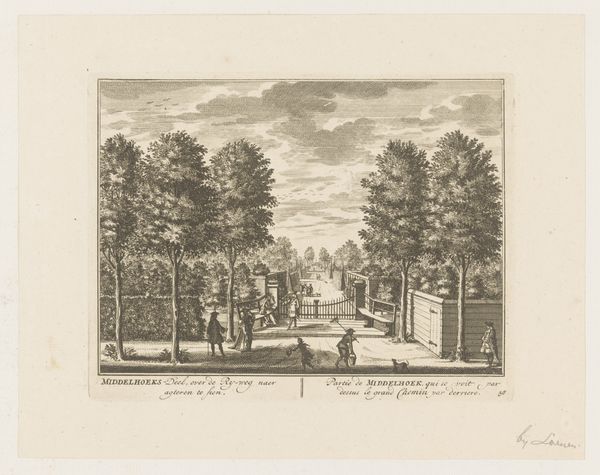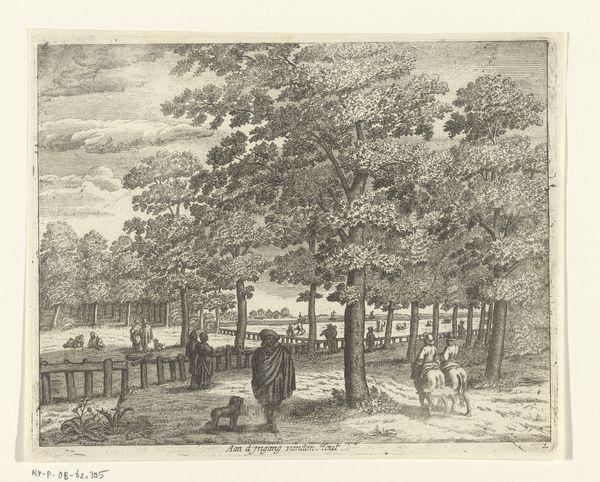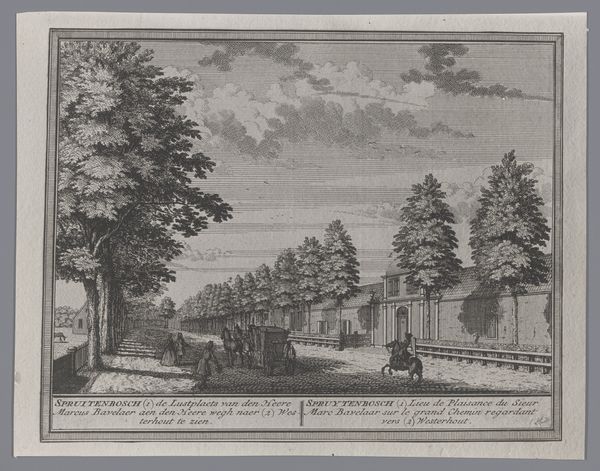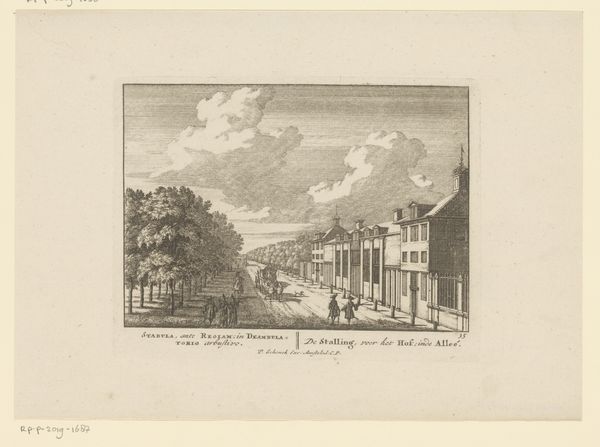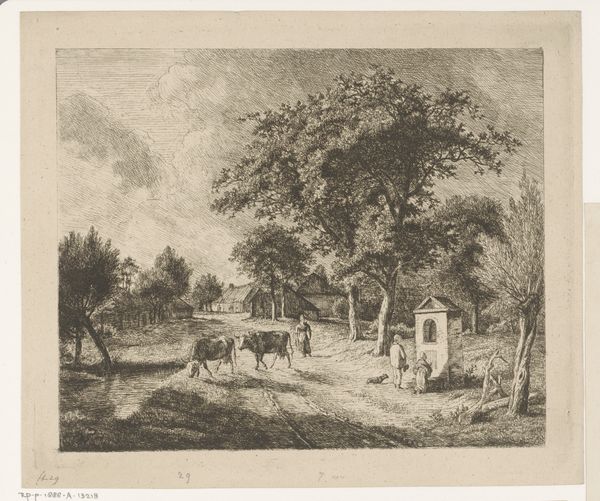
Dimensions: height 162 mm, width 206 mm
Copyright: Rijks Museum: Open Domain
Curator: This is "Gezicht op herberg Oud Rome ten westen van Beverwijk," or "View of the Old Rome Inn West of Beverwijk," an etching that has been attributed to Izaak Jansz. de Wit, placing its creation sometime between 1744 and 1822. It's currently part of the Rijksmuseum's collection. Editor: The linear quality gives it the charm of a technical illustration. I'm drawn to the delicate layering of lines forming the trees, how it almost abstracts them, though they stand in contrast to the very real activity below. Curator: Yes, the etching medium allows for such fine detail. Notice the layering creates a tangible sense of light and shadow across the composition, animating the figures and drawing the eye to the inn itself. Etchings like this served multiple purposes in their time—reproducing paintings and offering more people access to artwork, also operating as records of landscapes and structures. Editor: I'm especially interested in how it speaks to social stratification through visual representation. The way the figures are dressed suggests varied socio-economic standings engaging with a space like the inn. The clothing’s construction speaks volumes about production of fabric, its use for making visible social status. Curator: Indeed, this piece, despite its tranquil depiction, highlights how inns were gathering spaces that blurred social lines to some extent. Looking at the buildings itself—the simplicity of design versus other Baroque architectural achievements reminds one to think about craftmanship’s access and role for local builders during that time. Editor: Furthermore, it captures a specific cultural moment—a snapshot of social interaction at the time of its production, with figures carefully posed or engaged in action, so viewers from other cities can observe and learn social conduct outside of their familiar cultural context. Curator: Consider how a piece like this, distributed widely, also influenced the perception and imagination of those who had never visited this region of the Netherlands. It played a role in shaping a collective understanding of the nation’s landscapes and societal habits. Editor: Thinking about it now, the means of its creation mirror its function, making accessible both its art and its social landscape for anyone who may consume it. Curator: I hadn’t considered how deeply embedded the interplay between medium, dissemination, and perception is! It offers new lens to appreciate its nuanced place in our collection.
Comments
No comments
Be the first to comment and join the conversation on the ultimate creative platform.
